CBD 101
Introduction
CBD is a hot topic lately because so many people discovered the compound provides therapeutic relief from everything from chronic pain to acne. There are dozens of news articles and television segments. Celebrities use CBD for relief from high heel discomfort, athletes use it, Baby Boomers swear by it, and even pets have gotten into the act.
Hemp is a cousin of marijuana; both come from the cannabis family of plants. Under the 2018 Farm Bill (The Agricultural Improvement Act of 2018), hemp was removed from the Controlled Substances Act, which means that it’s no longer an illegal substance under federal law. Since then, it has quickly gained popularity and is widely available everywhere, both in retail stores and online, thanks to its wide-ranging health benefits.
What is CBD?
So, by now, almost everyone has heard of it: But just what is CBD?
 CBD is an acronym for cannabidiol, a compound that occurs naturally in both marijuana and hemp. It’s found in very high concentrations in certain strains of hemp and is widely regarded to possess great medicinal value.
CBD is an acronym for cannabidiol, a compound that occurs naturally in both marijuana and hemp. It’s found in very high concentrations in certain strains of hemp and is widely regarded to possess great medicinal value.
Most CBD (cannabidiol) comes from the agricultural hemp plant, a fast-growing member of flowering plants in the family Cannabaceae. Marijuana belongs to the same family of plants. While marijuana and hemp are similar in many ways, they differ in their phytochemical composition.  Hemp has lower concentrations of tetrahydrocannabinol, or THC, which is the psychoactive compound in marijuana that gets you “high,” and it has higher concentrations of CBD, which doesn’t produce the “high” of marijuana. CBD was first discovered in 1940, and is the second-most prevalent of about 113 identified cannabinoids in cannabis plants.
Hemp has lower concentrations of tetrahydrocannabinol, or THC, which is the psychoactive compound in marijuana that gets you “high,” and it has higher concentrations of CBD, which doesn’t produce the “high” of marijuana. CBD was first discovered in 1940, and is the second-most prevalent of about 113 identified cannabinoids in cannabis plants.
Is CBD Legal?
While marijuana is legal in 23 states for medicinal use only and 10 states for medicinal and recreational use, hemp, from which our CBD is derived, is recognized as a legal agricultural product following the passage of the 2018 Farm Bill. It’s important to note that CBD is NOT the same as marijuana, and CBD from hemp is legal in all 50 states, while CBD from marijuana is not.
Will CBD Get Me High?
CBD is non-intoxicating and won’t produce the effects of marijuana. Many users do, however, report feelings of calm and relaxation. Marijuana has an abundance of Tetrahydrocannabinol (THC), the psychoactive substance in marijuana that produces a “high,” while hemp contains very little. Hemp-based CBD must contain less than 0.3% THC, so you don’t have to worry about that marijuana “buzz.”
Our CBD is extracted from non-GMO, pesticide-free, organic hemp and does not contain the psychoactive ingredient THC. Because of that, it is unlikely you will fail a drug test if you use CBD.
How Much CBD Should I Take?
Some of our clients report positive results with as little at 20 mg of CBD per day, but most find 50 mg to 100 mg per day most effective. While 100 mg per day is significantly more than most suggest, the response and feedback from our clients is overwhelmingly positive at these levels. We realize using these higher quantities on a regular basis is costly — and that’s one of the main drivers of Sunrise CBD and our pricing model. We want everyone to be able to afford what we consider effective doses of pure CBD.
How do I store my CBD?
While not necessary, it’s best to store our products in a cool, dry and dark place. A kitchen cabinet or refrigerator is great. Shelf life is up to 2 years.
What’s the difference between CBD oil and hemp oil?
Hemp oil is usually pressed from hemp seeds and contains no CBD. Our CBD is extracted from the entire hemp plant. We eventually end up with a compound that is 99+% pure CBD.
You can learn more about CBD and Sunrise CBD on our FAQ page.
History of CBD, Cannabis & Hemp
While many people are just now learning about CBD, cannabis and the hemp plant have long been used for a variety of purposes. Evidence of hemp rope was found via an imprint in broken Chinese pottery from about 10,000 B.C. A remnant of hemp cloth dating back to 8,000 B.C. was found by archaeologists in ancient Mesopotamia (now Iran and Iraq). Up until the cotton gin was invented, hemp was the most popular fiber for textiles.
Hemp had many other uses as well. The Chinese used hemp to make durable bow strings and paper. In the Middle Ages, hemp was used to make sails for ships. In fact, the word “canvas” comes from “cannabis” and means “made from hemp.”
It was also used for therapeutic purposes:
2700 B.C. Emperor Shen Neng was one of the first major leaders to prescribe cannabis tea to treat various illnesses. According to legend, a Chinese medical encyclopedia called Pen Ts’ao from around 2700 BC lists cannabis as a treatment for menstruation, gout, rheumatism, malaria, beriberi, constipation, and absent-mindedness.
1550 AD The Ebers Papyrus, an Egyptian medical text book from around 1550 BC, mentions the use of hemp to alleviate pain and inflammation, and to relieve depression and other psychological problems.
200 A.D. The first recorded use of cannabis as an anesthetic during surgery was by Chinese surgeon, Hua Tuo
100-1000s A.D. Cannabis was integrated into folk medicine for treatment of tumors, cough and jaundice during the Middle Ages in Europe.
Late 1700s Irish Doctor William O’Shaughnessy suggested using hemp seeds and roots to treat various health problems, including skin inflammation and incontinence.
1800s-1900s Cannabis was widely utilized as a patented medicine in the U.S. during the 19th and early 20th centuries. Cannabis was even prescribed to Queen Victoria for menstrual cramps.
CBD & Hemp Today
Today, hemp is grown and used in over 25,000 products globally, including food, fiber, building material, plastic, cord, jewelry, paper and biofuels. Leading up to the Farm Bill, applications for hemp farming were steadily increasing. According to Vote Hemp’s Crop Report, the nation’s foremost hemp advocacy group, there were 9,770 acres grown in 2016, 25,713 acres grown in 2017, and 78,176 acres grown in 2018. With passage of the 2018 Farm Bill into law, which made it easier for hemp farmers to get loans, you can be sure that number will continue to expand in 2019. Many farmers are turning to hemp as alternative to some of their traditional crops.
A big part of that surge in acreage is the popularity of CBD, which is widely used for its health benefits and can be found in everything from candy to coffee. According to a report by Cowen & Co., 7% of Americans are already using CBD, and that number is expected to grow to 10% by 2025. Cowen estimates the CBD market will grow to $16 billion by that time. It’s easy to see why applications to farm hemp have grown so quickly.
While recreational marijuana is now legal in 10 states, and medicinal marijuana is legal in 23 states, there is still a lot of controversy about its use, which spills over to CBD because it’s derived from the same family of plants. Misinformation or lack of information has led some people to believe CBD will get them get them high, which, of course, is not the case. As people get better information and more studies are done, CBD use will become more widespread.
The Benefits of CBD
The use of the hemp plant (Cannabis sativa) in medicine is nothing new, but hemp, in the form of CBD, has experienced an amazing resurgence and is widely used as a natural remedy for many ailments. Today, our customers take CBD for relief from insomnia, depression, anxiety, migraines, acne, muscle pain, rheumatism, chronic pain and much more. Because CBD is similar to the chemicals naturally created by our bodies, it can help reduce symptoms better than some synthetic drugs — and without harmful side effects.
CBD may be helpful in treating or preventing:
- Inflammatory and neuropathic pain
- Diabetes
- Nicotine addiction
- Dementia-related conditions (Alzheimer’s, Parkinson’s etc.)
- Cancer
- Anxiety
- Acne
- Depression
- Pain
- Insomnia
- And more applications will arise as its use expands…
CBD can be made into oil, cream, isolate, vape oil, and food. The World Health Organization has concluded that naturally occurring CBD is safe and 
Animals can also benefit from CBD’s therapeutic properties, which is why we sell CBD drops for pets. Consumers report that CBD helps relieve their pets of symptoms associated with inflammation, epilepsy, fearfulness, rheumatoid arthritis, anxiety, irritable bowel syndrome (IBS), pain, nausea, glaucoma, and skin problems.
A Note of Caution
There are very few reliable clinical studies on the effects of CBD on the developing fetus, but the American College of Obstetrics and Gynecology (ACOG) recommends not using cannabinoids during pregnancy and existing studies have indicated cannabinoids can affect neurodevelopmental processes in the fetus. Because cannabinoids can pass to babies through breast milk, most doctors caution against using CBD while breastfeeding.
If your doctor has told you not to eat grapefruit or drink grapefruit juice with your medication, don’t take CBD.
Studies
Cannabidiol (CBD) has long been recognized for its therapeutic benefits, as explained above; use of the cannabis plant for medicinal purposes goes back thousands of years. But you’re probably wondering if there are any modern-day studies that back the claims of CBD’s healing effects. We can tell you there are many — and as the popularity of CBD rises, we can expect to see many more in the future. If there’s one thing many researchers agree on, it’s that data so far provides a case for further research to learn more about the therapeutic potential of CBD.
As with any medication or supplement, consult with your doctor before starting a CBD regimen or discontinuing prescribed medications.
How to Use CBD
CBD can be found in everything from pills to edibles to e-cigarettes and alcohol (although the FDA has not approved the use of CBD in food products). Here are a few of the most common ways to use it:
 Oil
Oil
Ingesting CBD oil is the second-fastest method of absorbing the compound. Because it starts to take effect as early as 15 minutes after ingestion, it’s effective in quickly alleviating pain or other discomforts. Simply take the dropper, measure the desired amount of CBD oil, and place it under your tongue, where it is absorbed directly into the bloodstream. Our CBD oil is made with an isolate suspended in MCT oil.
 Capsules
Capsules
CBD capsules are a good way to make sure you are getting exactly the dose you want, especially if you’re trying to maintain a steady, consistent dosage. Capsules take longer to take effect — up to an hour or two, because they first must be digested. It can take longer if the capsule is taken on a full stomach. Our capsules come in several strengths and are made with pure, organic CBD powder.
 Vaping
Vaping
Vaping is the quickest way to get CBD in the bloodstream –it can take as little as 30 seconds, which makes it a good option when immediate relief is needed, such as in the case of nausea. But it should be used sparingly: The long-term effects of vaping large amounts of CBD is unknown, so start with a small dose. Even with a vape, you are taking smoke into your lungs, and any kind of smoke in your lungs can cause problems. We currently don’t carry vape oil, but we plan to soon. Like all our other products, our vape oil will be 100% pure CBD with no contaminants.
 Topical Balms & Creams
Topical Balms & Creams
A topical application, via a CBD cream or balm, is ideal for joint pain and skin issues. The CBD isn’t absorbed into the bloodstream, so its effects are highly focused.
Creams tend to be expensive because they require a large amount of CBD to be effective – and that cost is passed to the customer. Our CBD cream is available for up to 80% off retail prices.
 Isolate
Isolate
CBD Isolate contains nothing but CBD. It comes in a crystalline powder that’s pure CBD. Like our other CBD products, our isolate contains zero THC. Isolate has no taste or odor. A benefit of isolate is you know just how much you’re getting: One milligram of isolate = one milligram of CBD. Place it under your tongue and wait for about a minute for the isolate to dissolve into your bloodstream.
You can also make your own CBD products with isolate, such as oil or cream, or you can mix it in coffee or tea, or make a smoothie. You can even bake edibles with it, but the cooking temperature should be no higher than around 325℉ because the CBD will lose its effectiveness at higher temps.
 CBD for Pets
CBD for Pets
Many people give CBD to their pets for many of the same reasons people use it: To relieve anxiety, pain, cancer, epilepsy, degenerative disease, skin issues, and for overall wellness. Remember, our pets are much smaller than us and their endocannabinoid system more complex, so they tend to feel the effects more acutely than we do. Dr. Cornelia Wagner of the Hawthorne Veterinary Clinic in Portland, OR, suggests starting with the lowest amount possible and gradually increasing the dose every 5 days until the desired effect is achieved.
Dr. Angie Krause of Boulder Holistic Vet makes the following recommendations for choosing a CBD product for your pet:
- It’s grown organically.
- It is extracted with CO2.
- The company measures the content of CBD, THC, and other therapeutic terpenes.
- The company should be able to provide you with a guaranteed analysis of the product.
Where to Buy CBD
Today, there are many places to buy CBD. Even CVS pharmacies and Walgreens sell lotions and transdermal patches that contain CBD. There are retail stores that carry a wide variety of CBD products and other merchandise, some CBD brands have brick-and-mortar retail shops, and there are many CBD products available online.
CBD is not yet regulated by the FDA, so be sure to buy your CBD products from a reputable seller. Because of its skyrocketing popularity, many unscrupulous merchants have jumped into the CBD market and are selling CBD products with far less CBD (and sometimes more than 0.3% THC) than listed on the label. As far back as 2017, a study found that nearly 70% of online CBD extracts were mislabeled, and recently, a Massachusetts lab tested multiple samples of CBD products and none of the products tested contained the amount of CBD listed on the label.
What to Look For
Here’s what you should look for when buying CBD:
Has the product been tested by a third-party lab?
If the products aren’t tested in a lab, there is no way to be sure whether harmful chemicals and/or contaminants are present, and/or you may not be getting the amount of CBD (or THC) listed on the label.
Does the company post the results of the lab tests on its site?
If not, are the reports easy to access somewhere else? If you can’t get the lab results, beware.
How recent is the lab report?
If it’s from five years ago, again, beware.
Is the 3rd-party lab accredited?
A good, reputable lab is accredited in accordance with the International Organization for Standardization (ISO).
Does the product have 0.3% THC or less?
If not, it may not be legal in your state. And if there’s too much THC, you may get psychoactive effects that you don’t get with pure CBD.
Where did the hemp come from?
Hemp can grow in many places, but the growing conditions in the US make it the best place to grow quality hemp. Our hemp is organically grown in the US.
Are the ingredients all natural?
Are there additives and hard-to pronounce ingredients? If so, be sure you know what you’re getting. Sunrise CBD is organically grown, pure CBD that’s all-natural and vegan-friendly.
What type of CBD is being used?
There are three types to consider:
- CBD Isolate, which is pure CBD extracted from the hemp plant, and isolated from other cannabinoids. The result is pure CBD.
- Full Spectrum CBD, is the “kitchen sink CBD.” In other word, it has everything the plant contains, including THC. Because it contains THC, it may not be legal where you live.
- Broad Spectrum CBD is a Full Spectrum CBD with NO THC.
Is the price fair?
Be sure to compare quality, size, purity, and CBD levels, then compare prices for similar products. Make sure there are no additional, hidden costs. You’ll find a wide range of prices for CBD. After that, compare with our prices. We’re sure you’ll find we sell the highest quality CBD for the lowest price anywhere. And Sunrise CBD products are 100% pure and third-party lab tested, so you can be sure there are no pesticides, heavy metals, residual solvents, or bacteria present, and the product is always THC-free.
Why Buy From Sunrise CBD
Our mission is simple: To offer the best possible CBD products direct to you at the lowest possible price. Customers with chronic health issues have found that CBD provides relief, but a consistently high-grade product has often just been too expensive. With Sunrise CBD now available at up to 80% off retail, customers can save hundreds — or even thousands — of dollars over time. Yes, our prices are low. That’s because we manufacture our products and sell only online to minimize overhead. We remove everyone between us and you — there’s no middleman — which allows us to pass savings on to our customers. We offer the lowest-cost, pure, organic CBD anywhere: We guarantee it.





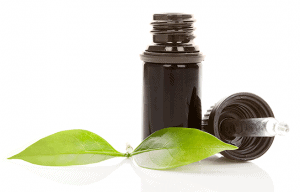 Oil
Oil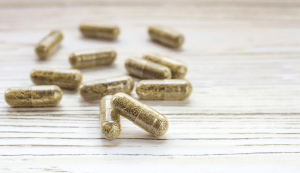 Capsules
Capsules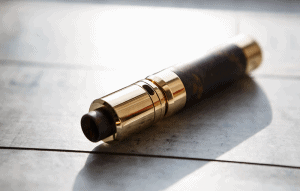 Vaping
Vaping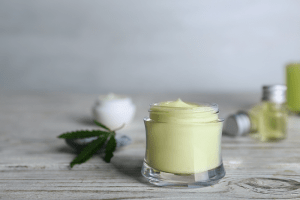 Topical Balms & Creams
Topical Balms & Creams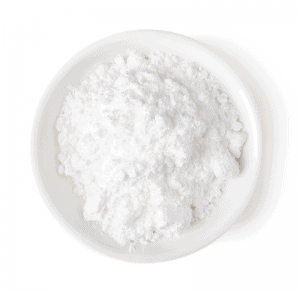 Isolate
Isolate CBD for Pets
CBD for Pets